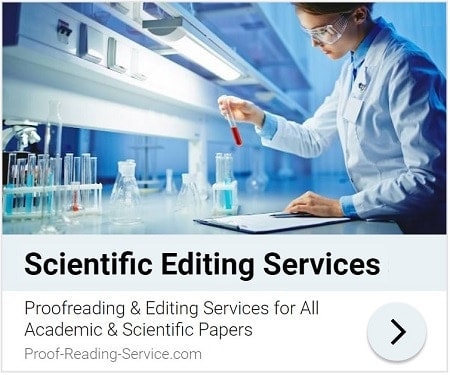
Table of Contents (Guide To Publication)
Part I: What To Publish and Where To Publish It – Chapter 1
1.2 Evidence: Discoveries, Results and Data
The evidence presented in a scholarly paper – the discoveries, results and data that stem from the research – is in many ways the heart of any article. Were the evidence discovered through the approaches you adopted not convincing or interesting or original or useful, there would be little point in writing a paper to share that evidence and your means of obtaining it with the scholarly community. Describing even the most wonderful and promising of studies is not enough on its own: the researcher needs to decide exactly what he or she has learned, why and what aspects of that new knowledge are significant, and then make both that knowledge and its importance clear for readers of the article. By writing at all, the academic or scientific author assumes that the information he or she has to share will be new and of both immediate and abiding interest to others working in the same field, and often beyond it, and that this information will therefore influence the nature and direction of future research in the area. In order to achieve such lofty goals, the evidence must be both significant and sound, and it must also be presented to readers in ways that make clear exactly what has and has not been shown as well as what those results might mean.
It is the job of each author to make sure that his or her evidence, just like his or her methodology, meets the standards of acceptability and validity within the relevant field of study. These standards will differ considerably between disciplines, of course, but clarity is central to presenting evidence effectively no matter what the topic may be. This can be challenging: presenting data in ways that are both precise and interesting as well as grammatically correct and, if at all possible, eloquent is no easy task, as anyone who has written ‘more than’ or ‘compared with’ or ‘in relation to’ for the fourth or fifth time in a paragraph is well aware. There is an enormous temptation to cut corners by using, for instance, pronouns instead of precise nouns and words such as ‘former’ and ‘latter’ instead of repeating full descriptions of data in order to avoid repetition in the main text. Such efforts at condensation can be successful and they can certainly result in unencumbered language if they are very carefully worded, but when it comes to reporting results, they are rarely as effective as clear, simply structured sentences that outline with exact nouns and verbs precisely what has been discovered or determined (on the use of pronouns and precise language, see Sections 4.4.1 & 4.4.3).
If you are a virtuoso of scholarly English prose, by all means flaunt your style when reporting the results and discoveries of your research: a clear and eloquently written Results section is a rare and admirable accomplishment in any academic or scientific paper and should definitely be a goal for those who wish to make a career of writing scholarly prose. Do remember, however, when planning how you will present evidence in your paper that the skill needed to achieve this sort of eloquence is most often acquired through years of practice and experience, and the first goal of any researcher attempting to share his or her results is clear communication. A long, beautifully constructed sentence with clever turns of phrases and five parenthetical clauses may roll pleasingly off the tongue (or not), but it may also confuse readers who simply aren’t as familiar with your results as you are, particularly if precise, detailed description is compromised for the sake of style. So three shorter sentences, for instance, no matter how simply structured or seemingly dull, may prove far more successful for factually laying out the exact nature of your evidence and results in a way that can be readily understood by your readers. That evidence is usually complicated enough on its own, so trying to keep the ways in which you report it as simple as possible can be most beneficial for both your paper and your readers.
Often tables, graphs and illustrations can be immensely helpful in presenting complex evidence clearly and concisely in as little space as possible, so it’s a good idea to decide before drafting your paper exactly what information might work well in tables and figures, and what information will not. Study designs, numerical data, the details of control and intervention groups, and any other material that can be assessed and compared at a glance are particularly effective in tables, and figures can provide not just illustrations of devices and details but also charts, plots and graphs that present evidence in striking visual forms. Tables and figures are only as useful as they are well designed, however, so clarity and accuracy is required in all the elements of tables and figures: columns, rows, charts and graphs should be laid out as tidily as possible to relate and separate information in a manner that avoids confusion. Any abbreviations used in a table or figure should be defined or explained in the table or figure itself because each table or figure should be comprehensible on its own, without the reader having to refer back to the text. The title of a table or the caption for a figure should also be explanatory: that is, it should describe exactly what the table or figure shows, including brief clarifications of any information about categories, values, comparisons and so on that are outlined in more detail in the paper itself. So if you’re hoping to use tables and figures, keep these basic requirements in mind as you work on your designs and only plan on using tables and figures if you are fairly certain they will successfully communicate to your readers evidence central to your study (for more information on tables and figures, see Section 5.1 below).
This article is part of a book called Guide to Academic and Scientific Publication: How To Get Your Writing Published in Scholarly Journals. It provides practical advice on planning, preparing and submitting articles for publication in scholarly journals.
Whether you are looking for information on designing an academic or scientific article, constructing a scholarly argument, targeting the right journal, following journal guidelines with precision, providing accurate and complete references, writing correct and elegant scholarly English, communicating with journal editors or revising your paper in light of that communication, you will find guidance, tips and examples in this manual.
This book is focusing on sound scholarly principles and practices as well as the expectations and requirements of academic and scientific journals, this guide is suitable for use in a wide variety of disciplines, including Economics, Engineering, the Humanities, Law, Management, Mathematics, Medicine and the Social, Physical and Biological Sciences .
Table of Contents (Guide To Publication)
You might be interested in Services offered by Proof-Reading-Service.com
Journal Editing
Journal editing and proofreading services
Thesis Editing
Dissertation & thesis editing & proofreading
Scientific Editing
Scientific editing services for publication success
Book Editing
Professional book editing & proofreading services
Expert Editing
Expert Editing for all academic & scientific papers
Report Editing
Research Editing
Research paper editing & proofreading services
Grant Editing
Grant editing and proofreading services






